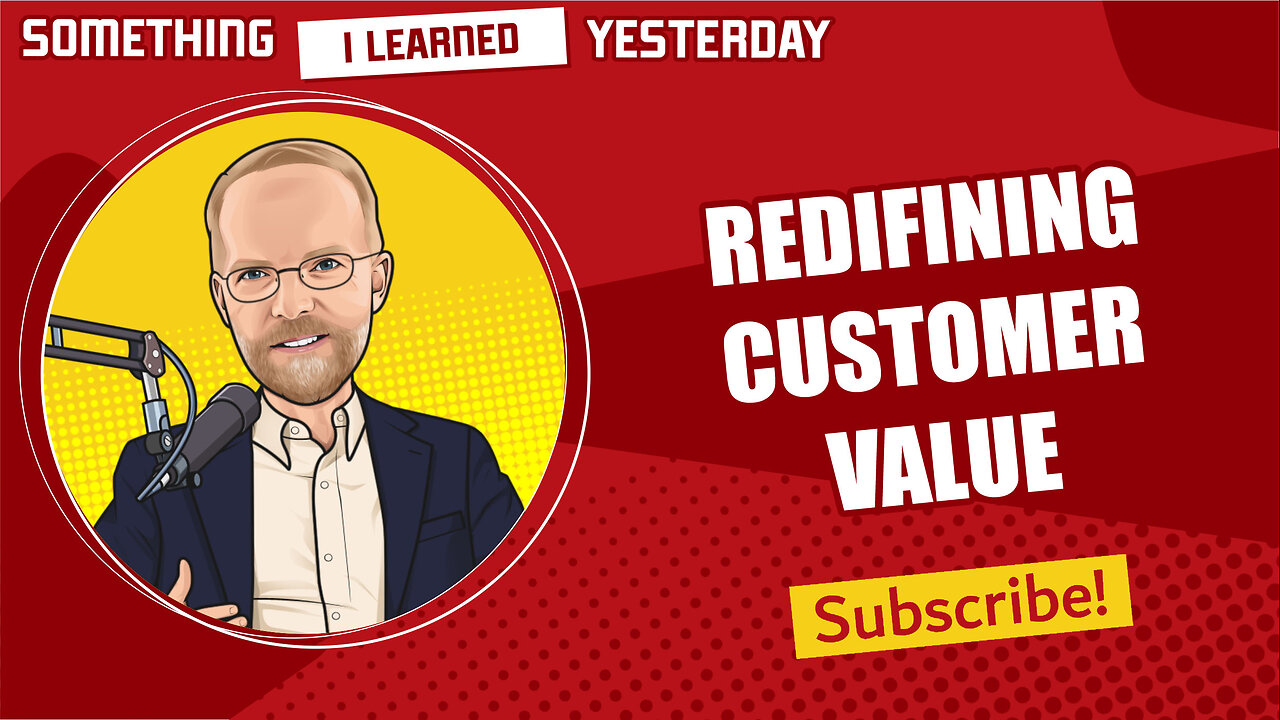Premium Only Content

160: Redefining Customer Value in the Age of Media Fracturing
As content distribution channels multiply, should publishers turn to generic brand advertising?
Robbie Kellman Baxter distributed a “Customer Retention Metrics Kit” yesterday. It’s worth looking at as an overview of the terms and concepts you should be thinking about if you run a subscription business.
In her post introducing the kit, she said “it’s more important than ever to keep the customers you have – and expand the relationship.”
I can’t disagree with that, but what does it mean to “keep a customer” in today’s fractured marketplace?
The simple answer is to keep them writing checks, but isn’t it more complicated than that?
If someone cancels their subscription to your newsletter but becomes a regular listener to your ad-supported podcast, have you lost the customer?
We’d like to reduce this to charts and reports and things, showing how customers migrated from one revenue-generating option to another. But that’s impossible for many of the potential scenarios. In the podcast example I just cited, you usually don’t know who’s downloading your podcast. You probably also don’t make as much revenue from one podcast listener as you make from one newsletter subscriber.
But what if this formerly barely interested newsletter reader becomes an advocate for your podcast? Maybe he’s worth even more now.
As media is distributed across a broader network, with various formats and things, content creators are going to have to find a way to cope with this. Does that mean they have to be more flexible with their revenue projections? The CFO isn’t going to like that.
Robbie’s chart made me realize there are lots of concepts that are getting mushed together into a strange media mix.
We have the distinction between audience and customer.
“Subscriber” has (somewhat to my horror) come to mean both paid and unpaid. (It irks me that people use “subscriber” for people who sign up for their free e-newsletter, but I have yet to come up with a better word.)
Among all these groups we have the freebie-seekers, the bargain hunters, the loyal customers, the brand ambassadors, etc.
Even among those who like a brand, there’s going to be some fluidity about how they interact with it. They might freely flow between the free e-newsletter, the YouTube channel, the podcast, the app, the subscription magazine ….
You can’t track all that – which drives some people crazy. Everything’s about tracking and metrics and attribution. So how do you create a sensible business model with all these moving pieces?
One approach might be to run each product as its own business. The magazine does one thing and the YouTube channel does something, and you realize people might go back and forth, but you can’t measure that, and if you can’t measure it you can’t do anything about it, so just proceed as if it doesn’t matter.
But this isn’t an entirely new problem. Publishers have faced this basic issue before. We didn’t know who was buying our product on the newsstand either.
So maybe this fracturing of the trackable parts of our business could lead us back to the idea of generic brand advertising as an important part of the marketing mix for publishers.
Links
Customer Retention Metrics Kit
https://www.linkedin.com/posts/robbiekellmanbaxter_a-comprehensive-kit-of-customer-retention-activity-7140734829800697856-r0U3
-
 30:01
30:01
Shrouded Hand
1 day ago $6.29 earnedThree Disturbing Missing Child Cases
18.5K3 -
 8:27
8:27
Rethinking the Dollar
17 hours agoHow to Navigate the Crypto Boom vs. Metals Drop in 2024
11K3 -
 1:00:23
1:00:23
PMG
15 hours ago $3.66 earned"The Dark Alliance of Big Pharma & Big Food w/ Dr. Tenpenny"
10.1K1 -
 0:44
0:44
OfficialJadenWilliams
12 hours agoiPhone password
6.48K5 -
 13:16
13:16
Degenerate Jay
13 hours ago $3.81 earnedHow Stellar Blade Did Outfits Right
19.1K5 -
 1:01:55
1:01:55
Bright Insight
9 days agoAncient Apocalypse Review LIVESTREAM
103K81 -
 1:03:31
1:03:31
Steve-O's Wild Ride! Podcast
4 days ago $18.66 earnedDave Mustaine Takes Sh*t From Nobody - Wild Ride #242
48.6K21 -
 6:57:29
6:57:29
MissesMaam
7 hours agoRumblers Survive Cannibals and Mutants | Sons of the Forest 💚✨
35.8K -
 3:02:59
3:02:59
PudgeTV
12 hours ago🔵 Mod Mondays Ep 46 | Cancel This Podcast
29.6K -
 1:57:39
1:57:39
Glenn Greenwald
12 hours agoDems & Media Still Blaming Everyone But Themselves, Especially Voters; Trump Bans Pompeo & Haley, Appoints Stefanik: What Does This Reveal About Next Admin? | SYSTEM UPDATE #364
196K202